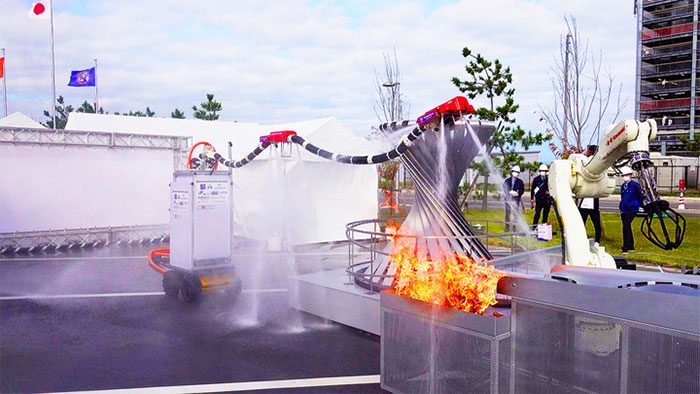Japanese researchers have developed a new “super” styled robot capable of assisting fire-fighting teams worldwide.
Designed to resemble a “flying dragon”, this robot was created to tackle fires deemed too dangerous for human firefighters to confront. The aerial firefighting robot, named Dragon Firefighter, was officially announced in the journal Frontiers in Robotics and AI.
A group of researchers from Professor Satoshi Tadokoro’s laboratory at Tohoku University initiated the development of this robot project. According to the researchers, throughout the preliminary development stages, the team collaborated with Japanese firefighting experts to gain a deeper understanding of the challenges involved.

A group of researchers in Japan has created the advanced design of the “Dragon Firefighter” robot, which is a remotely controlled flying fire hose aimed at extinguishing fires more safely and effectively. (Photo: Tohoku University).
Dr. Yuichi Ambe, a co-author of the project at Tohoku University, stated: “The prototype of the flying dragon fire hose is 4 meters long, designed to extinguish fires in buildings safely and effectively by directly approaching the fire sources.”
The Dragon Firefighter generates eight adjustable water jets from a pressurized source located at the center and the front of its design. The nozzle configuration is highly flexible, allowing it to adapt and align with the direction of the flames, guided by a controller mounted on a wheeled cart at the rear. This cart is linked to a fire truck equipped with a large 14,000-liter water tank through a specialized water supply hose.
Operating at a rate of 6.6 liters per second, the nozzles spray water at pressures of up to 1 megapascal (MPa). The nozzle tip integrates both conventional and thermal imaging cameras, facilitating fire detection and location. According to the research team, this technology integration enhances the firefighting capabilities of the Dragon Firefighter.
Currently, further design improvements are underway, including enhancing the nozzle’s ability to handle greater net forces and refining the water flow mechanism. Dr. Ambe noted: “We estimate it will take about another 10 years to deploy this robot in real-life firefighting situations. The main challenge will be extending the nozzle design to over 10 meters.”


















































